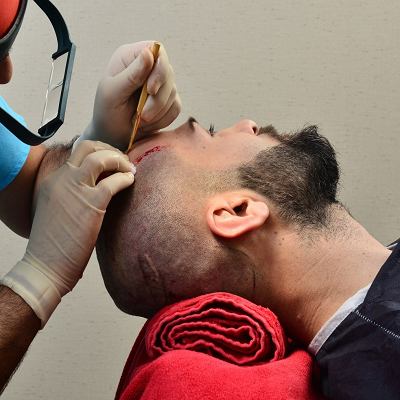Hair transplants have become an effective and permanent solution for those struggling with hair loss. However, in some cases, individuals may require a second hair transplant to achieve their desired results. Whether due to further hair loss, inadequate initial coverage, or a desire for increased density, a second hair transplant in Islamabad is a viable option for many patients. In this article, we will explore when a second procedure is necessary, what to expect, and how to ensure the best possible outcome.
Reasons for a Second Hair Transplant
There are several reasons why someone may consider undergoing a second hair transplant:
1. Progression of Hair Loss
Hair transplants typically use hair follicles from the donor area, which are resistant to hair loss. However, if the original transplant did not address all areas prone to hair loss, further thinning can occur. As a result, some patients may need a second transplant to cover newly affected areas.
2. Insufficient Density from the First Procedure
In some cases, the first transplant may not have provided the desired hair density. Factors such as the number of grafts used, the skill of the surgeon, and the patient's natural hair growth pattern can affect density. A second procedure can help fill in areas that appear too sparse.
3. Scalp Expansion or Scarring
Some patients may experience scarring or irregularities after the first procedure. A second transplant can help refine the results by improving the appearance of scarred areas or enhancing the overall symmetry of the hairline.
4. Correcting a Poorly Done Transplant
If the initial transplant was performed by an inexperienced surgeon, the results might not look natural. A second transplant performed by a skilled professional can correct unnatural hairlines, improper graft placement, or other aesthetic concerns.
5. Desire for Increased Hairline Refinement
Some patients may initially opt for a conservative hairline placement. Over time, they might decide they want a slightly lower or more defined hairline, which a second procedure can achieve.
When is the Right Time for a Second Hair Transplant?
If you are considering a second hair transplant, timing is crucial. Here are key factors to consider:
1. Healing and Recovery from the First Transplant
Patients should wait at least 12-18 months after their first transplant before considering a second one. This allows time for the transplanted hair to grow and for the final results to become visible.
2. Stability of Hair Loss
A second transplant is most effective when the patient’s hair loss has stabilized. If hair loss is still progressing, additional procedures may be needed in the future. Medications like Minoxidil or Finasteride can help slow down further hair loss.
3. Availability of Donor Hair
A second transplant requires sufficient donor hair. If the donor area has been significantly depleted, alternative options such as body hair transplantation (BHT) may be considered.
4. Consultation with a Hair Transplant Specialist
Before deciding on a second procedure, it is essential to consult with an experienced hair transplant surgeon. They will assess your donor area, discuss expectations, and recommend the best course of action.
What to Expect During a Second Hair Transplant?
1. Pre-Procedure Assessment
During your consultation, your surgeon will examine the current condition of your hair, donor supply, and scalp elasticity. A personalized plan will be created based on your specific needs.
2. Choice of Technique: FUT vs. FUE
-
FUE (Follicular Unit Extraction): Preferred for minimal scarring and natural results.
-
FUT (Follicular Unit Transplantation): May be used if more grafts are required, but it leaves a linear scar.
3. Surgery and Recovery
A second hair transplant follows the same process as the first:
-
The surgeon extracts hair follicles from the donor area.
-
Grafts are carefully implanted in the recipient area.
-
Recovery time is similar, with noticeable results appearing within 6-12 months.
Risks and Considerations
While a second hair transplant is generally safe, some factors should be considered:
-
Limited Donor Hair: Overharvesting can lead to a thin donor area.
-
Scalp Elasticity: If the scalp is too tight, it may limit the ability to extract grafts.
-
Healing Time: Recovery may take slightly longer if there is scarring from the first procedure.
How to Ensure the Best Results?
✔ Choose an Experienced Surgeon: Look for specialists with a proven track record in hair restoration.
✔ Follow Post-Operative Care Instructions: Proper aftercare helps optimize results.
✔ Manage Expectations: A second transplant can improve results, but it is important to have realistic goals.
✔ Consider Complementary Treatments: PRP (Platelet-Rich Plasma) therapy and medications can enhance results.
Conclusion: Is a Second Hair Transplant Right for You?
A second hair transplant is a viable option for those looking to enhance their hair density, cover new areas of hair loss, or refine their hairline. The success of the procedure depends on factors such as donor hair availability, scalp health, and the expertise of the surgeon. By consulting with a skilled hair transplant specialist, patients can achieve natural, long-lasting results that meet their expectations.

